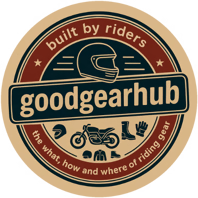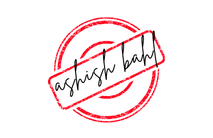
In This Blog
- When to go, Motorcycle to ride on, Weather, Routes & more - read the full blog !
- All details of Germany's famed B500 ride
- Bonus sections on must see spots, places to stay and eat !
The Eifel Loop: Germany’s Forgotten Volcano Country on Two Wheels
The Motorcyclist’s Briefing: Know Before You Ride
Few riders put the Eifel on their radar—and that’s what gives it its secret charm. It’s a land once stamped by fire, then mellowed by time. Old volcanoes here now seem to cradle quiet crater lakes, while roads meander unexpectedly through pine groves and stone villages that murmur of bygone eras. If the Black Forest blares like a grand symphony, the Eifel whispers like a soft poem—meandering, subtle, and oddly satisfying.
This loop isn’t shouting for your attention with celebrity status. Instead, it quietly pays off those who seek it out—with silky tarmac that feels like a dance, impromptu stops by lake fringes, and detours that may just make you question everything you assumed about riding in Germany.
Best Time to Visit
Late April through early October is really when things shine for a ride here. In spring, those crater lakes (locally dubbed Maare) glimmer beneath ridges dotted with wildflowers. Come summer, the thick corridors of pine offer a genuine cool respite. And in autumn? The whole region turns golden, with the roads mostly to yourself.
A little tip: skip the Nürburgring event weekends if you’re after a quiet escape—unless you’re in the mood for some motorsport buzz. Midweek rides, meanwhile, tend to be far more relaxed.
Ideal Motorcycle Type
Eifel roads can switch moods on you—sometimes they whip into wide, graceful arcs and other times they curl into tight, rustic switchbacks. You’ll need a bike that can roll with the punches.
Best Fit: Think mid-weight adventure tourers like the Yamaha Tracer 9 GT, BMW F900XR, or Ducati Multistrada V2.
Playful Options: Maybe a Triumph Street Triple, Honda CB650R, or Suzuki SV650 if you fancy waltzing through those curves.
Heavy Cruisers: They can work too, but in narrow valleys and rural bends you’ll have to show a bit more finesse.
Remember, it isn’t merely about raw horsepower—it’s about syncing with the flow of the road.
Motorcycling Gear to Carry
The Eifel might throw all four seasons at you in one go, so pack with care:
Textile jacket & pants that come with a removable thermal liner plus a waterproof membrane.
A full-face helmet fitted with an anti-fog visor or one that sports a built-in sunshield.
Two sets of gloves—one light, breezy summer mesh and one waterproof backup.
A neck buff, a rain overlayer, and an extra base layer.
Don’t forget a toolkit, a visor wipe cloth, and even a power bank stashed in your tank bag.
Also handy: a puncture repair kit and some offline maps—you’ll soon see why these can be lifesavers.
Emergency Response & Road Notes
For emergencies, dial 112. While most roads here are nicely paved, be prepared for abrupt moments when they narrow into single-track lanes.
Key notes:
Locals tend to ride fast, confidently—and sometimes near the edge—especially in areas like Daun and Nürburg.
Deer often wander about near dusk along lakeside and forest lanes.
Speed enforcement is there, but in a very unobtrusive way. Keep alert when cruising through small towns and nature parks.
The best rides come when you groove with the Eifel’s rhythm rather than battle against it.
What This Ride Really Is
The Eifel Loop wasn’t designed as a race—it’s an invitation to discover. Riding here is like tracing the faded scars of ancient fire. You meander between resting volcanoes and through valleys carved by lava and time. You might pause by lakes so still they almost mirror your own thoughts. It’s not a hard-hitting sprint—it’s a gentle, reflective journey. Think less about GP speeds and more about a laid-back, GPS-free adventure.
It’s not about conquering the route. You simply listen, letting the ride speak to you.
Mapping the Ride: The Classic Eifel Volcano Loop
Start: Gerolstein
Your journey kicks off in Gerolstein—a town with volcanic bones and a deep, storied past. It’s famed for its mineral water, but those in the know treat it as the perfect launchpad. Grab a hearty breakfast, top off your fuel, and head southeast toward Daun along the B410.
Gerolstein to Daun (via Hillesheim)
This leg eases you into the Eifel’s laid-back tempo—long, sweeping curves, sparse traffic, and the occasional twist in elevation. If you’ve got a spare moment, take a detour into Hillesheim; its cobblestone streets and gothic air give it a charming medieval vibe
Daun is a central hub, but even more, it’s surrounded by crater lakes (Maare) that invite you to circle them over and over.
Daun to Schalkenmehren to Gillenfeld
Now you’re deep in volcano country. Ride on through Schalkenmehren, then make your way toward Pulvermaar—a perfectly round lake cradled in an ancient crater. Stop—take a breath, let the history and natural beauty sink in, and let the ride itself guide your next move. Take your helmet off for a moment and just listen. There’s a quiet invitation here—a gentle series of forest climbs, lakes that catch the light like old mirrors, and winding roads edged with natural moss and wildflowers that seem to pop up unexpectedly.
Gillenfeld to Manderscheid
Head south until you hit Manderscheid, where two broken castles peer at each other from opposite cliffs. The road curls right beneath them—it’s snug, beautiful, and shaded in a way that makes you feel the forest’s breath. You almost catch the scent of pine and damp earth. Stop at the viewpoint near the castles; trust me, the pause is worth it.
Optional: Nürburgring Detour (via Kelberg)
If your hand’s itching for a bit more throttle, drift east toward Nürburg and the legendary Nürburgring Nordschleife. Even if riding the track isn’t on your agenda, the surrounding area buzzes with raw moto energy. It’s a spot for a quick refuel—not just for your bike, but for your spirit too.
Return via Ulmen or Kelberg to Gerolstein
When it’s time to head back, choose your route: slide westward through Ulmen, with its own quirky maar and a hint of gothic allure, or swing by Kelberg. The return stretch is fast, rolling, and perfectly set up for a little reflective cool-down as you ride.
Off-the-Map Stops That Make It Legendary
There are hidden gems that add their own magic along the way. Pulvermaar is a crater lake that almost mirrors your inner self. The Manderscheid Castles—these twin fragments of history—whisper centuries of warrior tales. Then there’s Meerfelder Maar, a more secluded spot crowned with a dreamy hilltop view, and the Eifelsteig hiking pullouts offer a pause to stretch out, with vistas that feel almost world-class. And if you’ve got extra time, take a long detour to Burg Eltz—hidden and majestic in its own right.
Where to Rest the Engine
For a break, find rider-friendly digs like Vulkanhotel Balance in Steffeln with its eco-lodge feel, sauna, and bike-friendly garage; or try Hotel am Ceresplatz in Manderscheid, a classic pension with meals that hit the spot. Over in Schalkenmehren, Pension Haus Sonneck gives you lakeside comfort and a solid cup of coffee. If you prefer pitching a tent, Camping Pulvermaar offers a quiet, clean spot nestled in the woods, while Campingplatz Manderscheid presents forest-shaded pitches along with hot showers and genuine peace. (Heads up: Germany doesn’t allow wild camping, so stick with these proper spots.)
Fuel, Food & Fixes
Fill up in Gerolstein, Daun, Manderscheid, or Kelberg—but don’t bank on that “small village” pump being open on a Sunday. When it comes to food, eat regional. Try the Eifeler Speckpfannkuchen—a pancake stuffed with bacon—or indulge in a wild boar roast called Wildschweinbraten seasoned with local herbs. And you mustn’t skip the ritual of Kuchen & Kaffee; it’s non-negotiable around here.
Coffee & Cake Worth the Stop
For those who need a sweet respite, hit up Café Maarblick in Schalkenmehren for lake views paired with generous, layered cakes. Or check out Kuchenwerkstatt Daun, a rustic café that switches up its tarts and pies on the regular. And over in Manderscheid, Café am Burgberg is perfect if you want to sit outside, watch the trees, and slowly savor every sip.
Local Customs & Road Culture
A quick tip: flash a friendly hand to every fellow rider you pass. In the quieter towns, ease off the throttle—this isn’t the Alps, after all. Locals here value order, punctuality, and those calm, early mornings, so be sure to respect that vibe. No racing; just let yourself flow. The Eifel isn’t here to inflate your ego—it’s there to open you up, gently, sometimes unexpectedly.
Ride Variations Worth Exploring
If you’re short on time, try the 1-Day Sprint: Gerolstein > Daun > Manderscheid > Ulmen > Gerolstein—a tight, scenic loop covering all the highlights. Feeling more adventurous? The 2-Day Explorer Loop offers Day 1 with Gerolstein > Schalkenmehren > Manderscheid (overnight stay), and Day 2 takes you from Kelberg through a Nürburgring detour before heading back through Ulmen. For the true wanderers, a 3-Day Ride awaits: Day 1 from Gerolstein to Daun, a lake loop then Manderscheid; Day 2 heads through Nürburgring and Adenau with a Burg Eltz detour; Day 3 lets you decide between a Rhine valley return or spinning a trail along the Mosel.
Apps & Navigation Help
For those curvy roads, Kurviger and Calimoto are spot on for the hunt. Organic Maps comes in handy when you’re off-line, while Blitzer.de is a local favorite to help you spot speed traps. And if anything should break down, ADAC Pannenhilfe is there to lend a hand.
goodgearhub wrap up
At its heart, the Eifel Loop isn’t about chasing pure adrenaline—it’s about capturing a sense of awe. That quiet moment when you crest a small hill, the road suddenly opens up, and a timeless crater lake sits below—its blue still deep, looking older than anything you’d ever ride through today. Somewhere on that bend between Schalkenmehren and Manderscheid, it all clicks:
You aren’t just riding across a landscape.
You’re riding through time.
